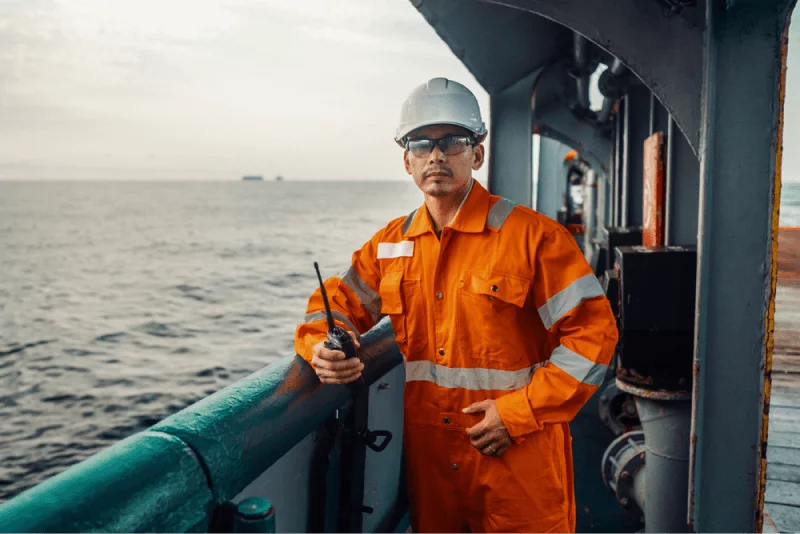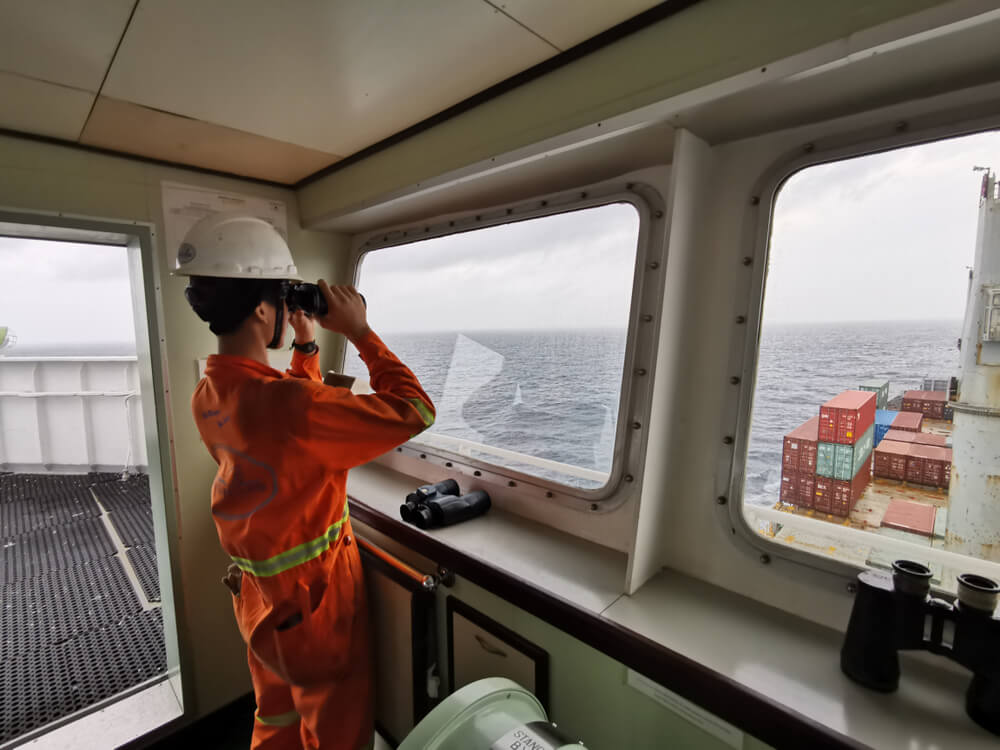Choosing the Right Senior High School Strand for Seaman

If you’re considering a career aboard a vessel, taking the marine strand in senior high school may be the best path for you.
We understand that planning for your future may feel daunting as a student. But what’s great is that there are guides that can help you decide which track to follow for your career.
That being said, you’re probably here to learn more about what is the best seaman strand in senior high.
What is the Strand of Seaman in Senior High?
Choosing the right maritime strand as your course of study in senior high school prepares you for a career in the maritime industry. The courses offered will give you the basic skills needed to be part of the crew aboard the vessel.
Apart from Technical-Vocational-Livelihood (TVL) Track, there are two other paths for the SHS strand for seaman: the General Academic Strand (GAS) and the Science, Technology, Engineering, and Mathematics (STEM) Strand.
General Academic Strand (GAS) for Maritime
With GAS, you have the freedom to take any college course if you choose this academic track. The General Academic Strand subjects set a solid academic foundation for a career in law, education, business management, medicine, and many more.
This track is usually for those who are undecided about which collegiate course to major in after high school.
The Classes You Should Expect Are:
- Written and Oral Communication
- Philosophy
- General Mathematics
- Disaster Readiness and Risk Reduction
- General Sciences
- Media and Information Literacy
- Contemporary Arts
- Entrepreneurship
- Work Immersion/Research
As you may notice, the courses you take with GAS are mainly general education subjects for senior high. This provides you with the necessary level of education on a wide knowledge base, from the sciences to the humanities and practical arts, and allows you the freedom to pursue specialized courses at the tertiary level, such as maritime.
Taking the GAS strand provides you with the basic aspects that are necessary for any type of work aboard a vessel. For example, disaster readiness and risk reduction prove to be crucial skills in times of emergency.
Of course, training aboard a vessel provides a more insightful experience in risk management, but having foundational knowledge is advantageous.
Ultimately, the primary advantage of taking GAS to eventually work as a professional on a ship is the opportunity of seeking further studies and post-graduate education.
Science, Technology, Engineering, and Mathematics (STEM) Strand for Maritime
Taking STEM as your seaman strand in Senior High will equip you with the technical knowledge needed as you work on a ship. With this track, you can enjoy the opportunity of being promoted to Officer positions.
STEM stands for Science, Technology, Engineering, and Math. This track gives you the basics of problem-solving and communication skills, which effectively makes it the best track if you want to go into Engineering, Computer Science, Information Technology, Applied Physics, Chemistry, and other related courses.
Choosing this track is also a good stepping stone to pursuing a career in the maritime industry as the classes offered tackle the fundamentals needed to be a seaman.
The Classes You Should Expect Are:
- English Communication
- Basic Calculus
- General Physics 1
- General Physics 2
- General Chemistry 1
- General Chemistry 2
- General Biology 1
- General Biology 2
- Disaster Readiness and Risk Reduction
- Work Immersion
Like the classes in GAS, the final class for STEM as the strand for seaman in senior high will be the work immersion. The advantage of taking this track is that you already have an understanding of the basic technical topics needed for a career in maritime as you enter collegiate-level studies.
Investing in the STEM strand as your maritime track is still the preferred direction that most students take because of the career advancement opportunities it can offer down the line. If you work hard and strive to build the experience, you can very well become the captain of your own vessel.
What are the Advantages of the Maritime Strand?
Taking either of these strands as your marine time strand in senior high school can help equip you with the specialized information needed specific to a career as a seafarer. The advancement in education gives you the opportunity to pursue work and training in the maritime industry.
And while there is no guarantee of what companies pay their employees, a survey showed that the average salary of an Ordinary Seaman is at least ₱243,168 per year. As long as you put in the hard work, you may be able to reach—or even go further than—the average compensation of a sea-based worker.
If you’re curious about the career opportunities that being a seafarer can offer, here’s a quick guide that you can check out:
What is a Seaman?
A Seaman or a Seafarer is a person working aboard a ship.
There are a lot of different jobs available depending on the type of ship you’re working on. The different types of vessels dictate what some of the specialized jobs are, and some of the common ships include container ships, cruise liners, heavy load carriers, tankers, bulk carriers, and more.
What Does a Seaman do?
Generally speaking, the job of a seafarer is to transport commodities from one location to another. The workers aboard the vessel make sure that the voyage runs smoothly and that the ship is in tip-top shape. The specific job of a seaman can also vary depending as there are specialized roles.
What Career Opportunities Can You Expect as a Seaman?
As a seaman, there are different types of maritime job roles that you can undertake.
The highest position on the ship is the Captain. This person is the commanding officer that oversees the ship, the cargo, and the entire crew.
Deck Department
The Deck Department holds the general crew in charge of operations, safety, and security. There are three main classifications of officers in charge:
- The First Mate is in charge of securing the safety and operations of the cargo. They are responsible for the whole Deck including the Deck Ratings, Chief Cook, and Chief Steward.
- The Second Mate is the navigation officer overseeing the safety of the vessel and its environment.
- The Third Mate assists in ensuring the security and safety of the crew and the ship.
The Deck Cadets are trainees to be Navigation Officers and they are being trained to move along the ranks as they advance their careers.
Engineering Department
Another important department is the Engineering Department, responsible for overseeing the maintenance of the ship’s engine to ensure everything is running. There are four main department heads responsible for the engine room:
- The Chief Engineer is the head of the Engineering Department and oversees the overall operations of the engine room.
- The Second Engineer is the next in command for the Engineering Department and is assigned to take care of the machinery items and the maintenance of the main engine. They oversee the Engineering Ratings like the oilers, fitters, and wipers.
- The Third Engineer maintains the operation of the generators, boilers, and propulsion machinery.
- The Fourth Engineer’s responsibility is to ensure the operations and maintenance of the sewage plant, incinerator, oily water separator, freshwater generator, and air compressor. They also assist the Chief Engineer in bunker calculations.
The Engineering Cadets are trainees to be Engineering Officers. They usually perform the tasks under the Second Engineer and learn the ropes on how to operate and maintain the machinery in the engine room.
Steward Department
The last department aboard the vessel is the Steward Department in charge of cleaning, cooking, serving meals, and maintaining the ship’s quarters. There are two officers in charge of this department:
- The Chief Cook oversees all the food prepared on the vessel.
- The Chief Steward assists the Chief Cook in preparing meals and the general cleanliness and maintenance of the crew quarters.
If you’re qualified for the job and are committed to your career advancement, any of these positions could be available to you.
Building Your Future with OEd Senior High School
With the lockdowns because of the pandemic, we have grown used to learning remotely in the comfort of our own homes. The great thing about AMA’s OEd Senior High School program is that it continues to give you the benefits of online distance learning in the Philippines while receiving quality education.
Preparing your path to career success can be an exciting and enlightening experience especially if you have the right educational partners to guide you.
If you’re interested in learning more about our online Senior High School program, be sure to check out our website for more information.

